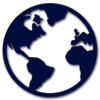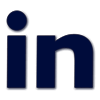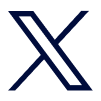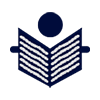
Only Regulatory Products (API/FDF), Drugs in Developments and News are Updated on this Virtual Booth
Update your Virtual Booth on PharmaCompass, ask us ![]()
About
CPhI North America CPhI North America
Not Confirmed
Not Confirmed
20-22 May, 2025
German Wound CongressGerman Wound Congress
Not Confirmed
Not Confirmed
07 April-09 May, 2025
Not Confirmed
Not Confirmed
08 April-11 May, 2025
List your booth number for exhibitions, ask us
CONTACT DETAILS






Upload your Marketing & Sales content on your company Virtual Booth, click HERE.
Events
Webinars & Exhibitions
CPhI North America CPhI North America
Industry Trade Show
Not Confirmed
20-22 May, 2025
German Wound CongressGerman Wound Congress
Industry Trade Show
Not Confirmed
07 April-09 May, 2025
Industry Trade Show
Not Confirmed
08 April-11 May, 2025
Digital content

INTERVIEW #SpeakPharma
[Sponsored by another company]https://www.pharmacompass.com/speak-pharma/our-unmatched-efficiency-and-track-record-of-faster-dmf-filings-give-our-customers-a-critical-competitive-advantage
VLOG #PharmaReel
[Sponsored by another company]DATA COMPILATION #PharmaFlow
[Sponsored by another company]https://www.pharmacompass.com/radio-compass-blog/cdmo-activity-tracker-axplora-enhances-adc-capacities-quotient-beefs-up-hpapi-capabilities-evonik-euroapi-forge-deals

01 Apr 2025
// FIERCE PHARMA
https://www.fiercepharma.com/pharma/merck-touts-data-showing-winrevair-reduces-mortality-morbidity-risk-76

01 Apr 2025
// BUSINESSWIRE
https://www.businesswire.com/news/home/20250401188979/en/Merck-to-Hold-First-Quarter-2025-Sales-and-Earnings-Conference-Call-April-24

31 Mar 2025
// PR NEWSWIRE
https://www.prnewswire.com/news-releases/merck-exercised-the-option-for-the-global-rights-of-abbisko-therapeuticss-pimicotinib-302416328.html

28 Mar 2025
// REUTERS
https://www.reuters.com/business/healthcare-pharmaceuticals/merck-plans-us-launch-subcutaneous-version-keytruda-october-1-2025-03-27/

27 Mar 2025
// INDPHARMAPOST
https://www.indianpharmapost.com/drug-approval/european-commission-approves-mercks-capvaxive-for-prevention-of-invasive-pneumococcal-disease-16941

27 Mar 2025
// INDPHARMAPOST
https://www.indianpharmapost.com/digitisation/merck-and-zebra-technologies-collaborate-to-create-safety-and-traceability-solutions-16945
Services

API & Drug Product Development
Excipients
Inspections and registrations

ABOUT THIS PAGE
Merck & Co is a supplier offers 149 products (APIs, Excipients or Intermediates).
Find a price of Betamethasone bulk with DMF, CEP offered by Merck & Co
Find a price of Betamethasone bulk with CEP offered by Merck & Co
Find a price of Ivermectin bulk with CEP offered by Merck & Co
Find a price of Loratadine bulk with CEP offered by Merck & Co
Find a price of 2-Methoxyestradiol bulk offered by Merck & Co
Find a price of 5-N,N-Dibenzylglycyl-Salicylamide bulk offered by Merck & Co
Find a price of Arprinocid bulk offered by Merck & Co
Find a price of Brompheniramine Maleate bulk offered by Merck & Co
Find a price of Butorphanol Tartrate bulk offered by Merck & Co
Find a price of CAS 50-28-2 bulk offered by Merck & Co
Find a price of CAS 53-16-7 bulk offered by Merck & Co
Find a price of Chlorpheniramine Maleate bulk offered by Merck & Co
Find a price of Conjugated Estrogens bulk offered by Merck & Co
Find a price of Corticosterone bulk offered by Merck & Co
Find a price of Danazol bulk offered by Merck & Co
Find a price of Desogestrel bulk offered by Merck & Co
Find a price of Dexamethasone bulk offered by Merck & Co
Find a price of Dexamethasone Sodium Phosphate bulk offered by Merck & Co
Find a price of Dexbrompheniramine Maleate bulk offered by Merck & Co
Find a price of Dexchloropheniramine Maleate bulk offered by Merck & Co
Find a price of Diethylstilbestrol bulk offered by Merck & Co
Find a price of Diflunisal bulk offered by Merck & Co
Find a price of Dihydrotestosterone bulk offered by Merck & Co
Find a price of Diltiazem bulk offered by Merck & Co
Find a price of Droperidol bulk offered by Merck & Co
Find a price of Edrophonium Chloride bulk offered by Merck & Co
Find a price of Enalapril Maleate bulk offered by Merck & Co
Find a price of Estradiol bulk offered by Merck & Co
Find a price of Estriol bulk offered by Merck & Co
Find a price of Ethinyl Estradiol bulk offered by Merck & Co
Find a price of Fentanyl Citrate bulk offered by Merck & Co
Find a price of Fluphenazine Decanoate bulk offered by Merck & Co
Find a price of Guaiazulene bulk offered by Merck & Co
Find a price of Heparin Sodium bulk offered by Merck & Co
Find a price of Hyaluronic Acid bulk offered by Merck & Co
Find a price of Imipramine Hydrochloride bulk offered by Merck & Co
Find a price of Lovastatin bulk offered by Merck & Co
Find a price of Medroxyprogesterone Acetate bulk offered by Merck & Co
Find a price of Megestrol Acetate bulk offered by Merck & Co
Find a price of Mestranol bulk offered by Merck & Co
Find a price of Mk-6240 bulk offered by Merck & Co
Find a price of Mk2048 bulk offered by Merck & Co
Find a price of Nalbuphine Hydrochloride bulk offered by Merck & Co
Find a price of Nalmefene Hydrochloride bulk offered by Merck & Co
Find a price of Naltrexone bulk offered by Merck & Co
Find a price of Neomycin Sulfate bulk offered by Merck & Co
Find a price of Norandrostenedione bulk offered by Merck & Co
Find a price of Norethisterone bulk offered by Merck & Co
Find a price of Norethisterone Acetate bulk offered by Merck & Co
Find a price of Norgestimate bulk offered by Merck & Co
Find a price of Omeprazole Magnesium bulk offered by Merck & Co
Find a price of Oxandrolone bulk offered by Merck & Co
Find a price of Oxytocin bulk offered by Merck & Co
Find a price of Pheniramine Maleate bulk offered by Merck & Co
Find a price of Pimozide bulk offered by Merck & Co
Find a price of Prasterone Acetate bulk offered by Merck & Co
Find a price of Prednisolone Sodium Phosphate bulk offered by Merck & Co
Find a price of Prochlorperazine Edisylate bulk offered by Merck & Co
Find a price of Promethazine Hydrochloride bulk offered by Merck & Co
Find a price of Pyridostigmine bulk offered by Merck & Co
Find a price of Testosterone Propionate bulk offered by Merck & Co
Find a price of Thiabendazole bulk offered by Merck & Co
Find a price of Thiamine Disulfide bulk offered by Merck & Co
Find a price of Tibolone bulk offered by Merck & Co
Find a price of Tubocurarine Chloride bulk offered by Merck & Co
Find a price of Urofollitropin bulk offered by Merck & Co
Find a price of Vitamin B12 bulk offered by Merck & Co
Find a price of 1-METHYL-1-(B-CHLOROETHYL) ETHYLENIMONIUM PICRYSULFONATE bulk offered by Merck & Co
Find a price of MANUF, CONTROL FACILITIES PROCEDURES FOR ALBANY, GA. PLANT bulk offered by Merck & Co
Find a price of BULK FORM OF DRUG PRODUCT L-590,153 PROCESSED RAHWAY, N.J. FACILITIES bulk offered by Merck & Co
Find a price of NORGESTOMET bulk offered by Merck & Co
Find a price of MERCK bulk offered by Merck & Co
Find a price of FACILS., METHODS & CONTROLS FOR PROCESSING & PACKAGING OF DRUG PRODS. bulk offered by Merck & Co
Find a price of MANUFACTURING SITE, FACILITIES, PERSONNEL, AND GENERAL OPERATING PROCEDURES IN LE PUY CEDEX, FRANCE. bulk offered by Merck & Co
Find a price of MANUFACTURING SITE, FACILITIES, PERSONNEL, AND GENERAL OPERATING PROCEDURES IN OKAZAKI CITY, JAPAN. bulk offered by Merck & Co
Find a price of TECHNETIUM Tc 99M POLYPHOSPHATE KIT bulk offered by Merck & Co
Find a price of PRO-STREP IN SWINE (VET) bulk offered by Merck & Co
Find a price of L-651,392-00N,4-BROMO-2,7-DIMETHOXY-3H-PHENOTHIAZIN-3-ONE bulk offered by Merck & Co
Find a price of MANUF&CONTROL FACILITIES&PROCEDURES AT SUBSIDIARY PLANT BARCELONETA,PR bulk offered by Merck & Co
Find a price of J-107088 bulk offered by Merck & Co
Find a price of AMPROL SUPER PLUS (AMPROLIUM & ETHOPABATE) (VET) bulk offered by Merck & Co
Find a price of MANUFACTURING SITE, FACILITIES, PERSONNEL, AND GENERAL OPERATING PROCEDURES IN HOBBESDON, HERFORDSHIRE, ENGLAND. bulk offered by Merck & Co
Find a price of MANUF.CONTROL,FACILITIES &PROCEDURES-AT RAHWAY, NJ PLANT bulk offered by Merck & Co
Find a price of MANUFACTURING SITE, FACILITIES, PERSONNEL, AND GENERAL OPERATING PROCEDURES IN WILSON, NORTH CAROLINA. bulk offered by Merck & Co
Find a price of STERILE DILUENT bulk offered by Merck & Co
Find a price of PREPARATION OF TEN STABLE ISOTOPE-LABELLED COMPOUNDS bulk offered by Merck & Co
Find a price of MK-4176 DRUG SUBSTANCE bulk offered by Merck & Co
Find a price of FACILITY AND PROCEDURES IN OSS, THE NETHERLANDS - MOLENSTRAAT 110 bulk offered by Merck & Co
Find a price of FACILITIES AND OPERATING PROCEDURES IN CLERMONT-FERRAND,FRANCE bulk offered by Merck & Co
Find a price of AMPROLIUM IN CHICKENS (VET) bulk offered by Merck & Co
Find a price of NITROGEN MUSTARDS bulk offered by Merck & Co
Find a price of MANUFACTURING SITE, FACILITIES, PERSONNEL, AND GENERAL OPERATING PROCEDURES. bulk offered by Merck & Co
Find a price of MANUF. & CONTROL,FACILITIES & PROCEDURES-FOR ELKTON, VA. PLANT bulk offered by Merck & Co
Find a price of PRO-STREP CRUMBLES (VET) bulk offered by Merck & Co
Find a price of MANUF. CONTROL FACILITIES & PROCEDURES FOR DANVILLE PA PLANT bulk offered by Merck & Co
Find a price of HADACIDIN SOD. DIHYDRATE (NSC 521778) & HADACIDIN POTASS. NSC 72962 bulk offered by Merck & Co
Find a price of PORCINE INSULIN HIGHLY PURIFIED bulk offered by Merck & Co
Find a price of RATHDRUM, COUNTY WICKLOW, IRELAND bulk offered by Merck & Co
Find a price of HYDROCORT. 21-PHOSPHATE & NEOMYCIN SO4--OPTHAL. SOL. 0.5% & INJECT bulk offered by Merck & Co
Find a price of ORG 32489 RECOMBINANT FSH bulk offered by Merck & Co
Find a price of MANUFACTURE AND CONTROL bulk offered by Merck & Co
Find a price of CORTATE (DESOXYCORTICOSTERONE ACETATE) bulk offered by Merck & Co
Find a price of AMPROLIUM MEDICATED FEED -(3-NITRO-4-HYDROXYPHENYLARSONIC ACID) (VET) bulk offered by Merck & Co
Find a price of PROCESS $ CONTROL DATE CONCERNING MANUFACTURE OF 2-ACETYLAMINA ETC. bulk offered by Merck & Co
Find a price of L-000825058 bulk offered by Merck & Co
Find a price of Alendronate Sodium bulk offered by Merck & Co
Find a price of Aprepitant bulk offered by Merck & Co
Find a price of Avobenzona bulk offered by Merck & Co
Find a price of Betamethasone Sodium Phosphate bulk offered by Merck & Co
Find a price of Boceprevir bulk offered by Merck & Co
Find a price of Boric Acid bulk offered by Merck & Co
Find a price of CAS 532-40-1 bulk offered by Merck & Co
Find a price of CAS 654671-77-9 bulk offered by Merck & Co
Find a price of Caspofungin bulk offered by Merck & Co
Find a price of Choriogonadotropin Alfa bulk offered by Merck & Co
Find a price of Cilastatin bulk offered by Merck & Co
Find a price of Cilastatin Sodium bulk offered by Merck & Co
Find a price of Cocarboxylase bulk offered by Merck & Co
Find a price of Cocarboxylase Tetrahydrate bulk offered by Merck & Co
Find a price of Desloratadine bulk offered by Merck & Co
Find a price of Dexketoprofen Trometamol bulk offered by Merck & Co
Find a price of Elbasvir bulk offered by Merck & Co
Find a price of Ensulizole bulk offered by Merck & Co
Find a price of Ertapenem Sodium bulk offered by Merck & Co
Find a price of Ezetimibe bulk offered by Merck & Co
Find a price of Fenbendazole bulk offered by Merck & Co
Find a price of Florfenicol bulk offered by Merck & Co
Find a price of Flunixin Meglumine bulk offered by Merck & Co
Find a price of Gentamicin Sulfate bulk offered by Merck & Co
Find a price of Grazoprevir bulk offered by Merck & Co
Find a price of Imipenem bulk offered by Merck & Co
Find a price of Loratadine bulk offered by Merck & Co
Find a price of Meglumine bulk offered by Merck & Co
Find a price of Metformin bulk offered by Merck & Co
Find a price of Milbemycin Oxime bulk offered by Merck & Co
Find a price of Montelukast Sodium bulk offered by Merck & Co
Find a price of Posaconazole bulk offered by Merck & Co
Find a price of Potassium Phosphate bulk offered by Merck & Co
Find a price of Raltegravir Potassium bulk offered by Merck & Co
Find a price of Rocuronium Bromide bulk offered by Merck & Co
Find a price of Simvastatin bulk offered by Merck & Co
Find a price of Sitagliptin Phosphate bulk offered by Merck & Co
Find a price of Sodium Fluoride bulk offered by Merck & Co
Find a price of Suvorexant bulk offered by Merck & Co
Find a price of Trisodium Citrate Dihydrate bulk offered by Merck & Co
Find a price of Zinc Oxide bulk offered by Merck & Co
Find a price of Lettermovir bulk offered by Merck & Co
Find a price of Dorabirin bulk offered by Merck & Co
Find a price of LUPROSTIOL bulk offered by Merck & Co
